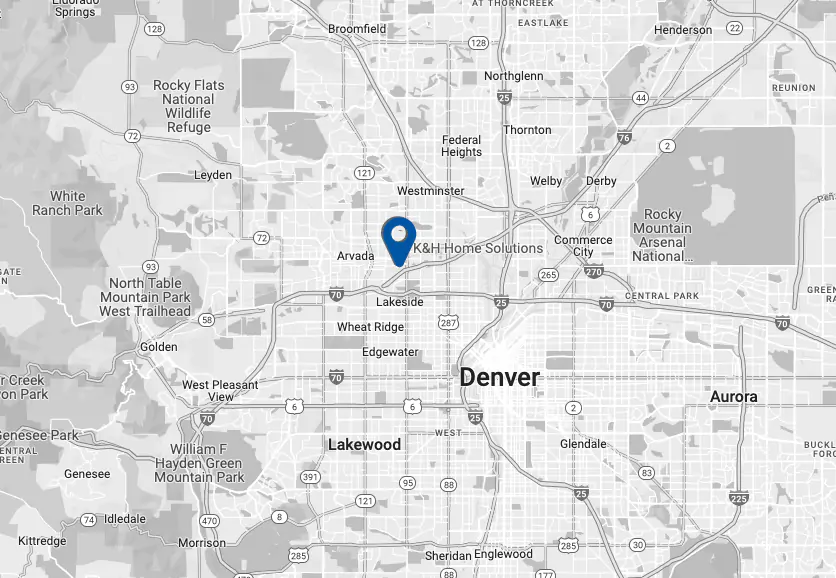Ice Dams
If your home does not have proper and effective attic insulation, heat can escape from the living space during the cold winter months. Heat is transferred from the living space and also generated from recessed light fixtures, air ducts, furnaces and other appliances and equipment located in the attic. This heat raises the roof temperature above the freezing point, causing the snow and ice on the roof to melt and flow downward.
This area is often just inside the perimeter of the outside walls. Once the melted snow, or water, meets back up with the colder part of the roof (overhang) that hangs over and outside of the interior walls (just above the soffit vent area), it begins to freeze again, expand and back up. This dam that forms is where this effect gets its name from; ice dam.
Have you ever noticed one house that is completely covered with snow on the roof? Then you see a house with no snow, or with areas that have completely melted away. Contrary to one’s belief, the house with all the snow on its roof, typically resembles the better insulated one. You may also notice huge, long icicles hanging down off the roof of one house, but not on another. These are all signs of an inadequately insulated roof and/or attic space.
What kind of havoc do ice dams wreak?
Roofs leak on attic insulation. In the short term, wet insulation doesn’t work well. Over the long term, water-soaked insulation remains compressed, so that even after it dries, the R-value is not as high. The lower the R-values, the more heat lost. This sets up a vicious cycle: heat loss-ice dams-roof leaks-insulation damage-more heat loss!
Water often leaks down inside the wall, where it wets wall insulation and causes it to sag, leaving uninsulated voids at the top of the wall. Again, energy dollars disappear, but more importantly, moisture gets trapped in the wall cavity between the exterior plywood sheathing and the interior vapor barrier. Soon you can smell the result. In time, the structural framing members may decay. Metal fasteners may corrode. Mold and mildew may form on the surface of the wall. Exterior and interior paint blisters and peels. As a result, people with allergies suffer.
Peeling paint deserves special attention here because it may be hard to recognize what’s causing it. Wall paint doesn’t usually blister or peel while the ice dams are visible. Paint peels long after the ice–and the roof leak itself–have disappeared. Water from the leak infiltrates wall cavities. It dampens building materials and raises the relative humidity inside the wall. The moisture within the wall cavity tries to escape (as either liquid or vapor) and wets the interior and exterior walls. As a result, the walls shed their skin of paint.
How do I solve the problem?
The way to stop ice dams from forming is to keep the entire roof cold. In most homes this means blocking all air leaks leading to the attic from the living space below, increasing the thickness of insulation on the attic floor, and installing a continuous soffit and ridge vent system. Be sure that the air and insulation barrier you create is continuous.
Don’t waste time or money placing electric heat tape on the shingles above the edge of the roof. Electrically heated cable rarely, if ever, solves the problem. It takes a lot of electricity to prevent ice formation; and the heating must be done before it gets cold enough for ice dams to form, not afterwards. Over time, heat tape makes shingles brittle. It’s expensive to install, too, and water can leak through the cable fasteners. And often the cables create ice dams just above them.
The worst of all solutions is shoveling snow and chipping ice from the edge of the roof. People attack mounds of snow and roof ice with hammers, shovels, ice picks, homemade snow rakes, crowbars, and chain saws! The theory is obvious. No snow or ice, no leaking water. Unfortunately, this method threatens life, limb, and roof.
Information taken from www.energystar.com




